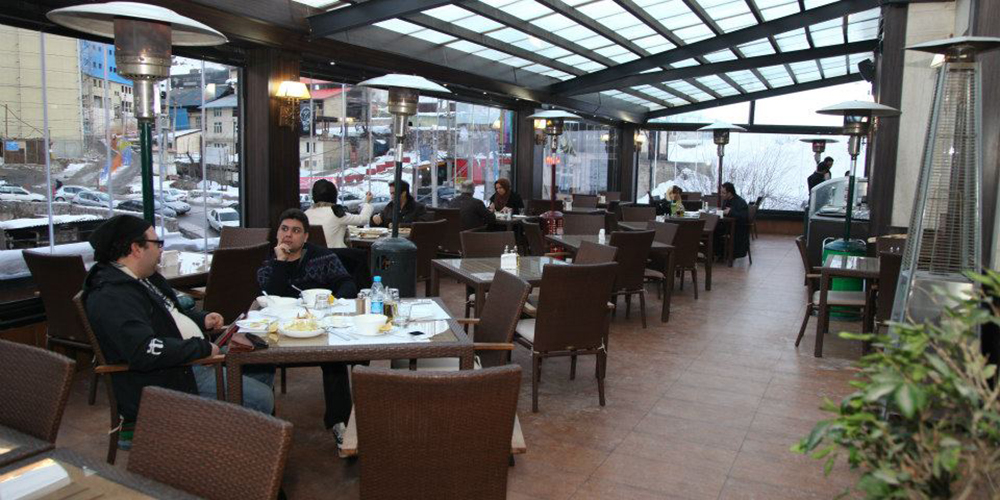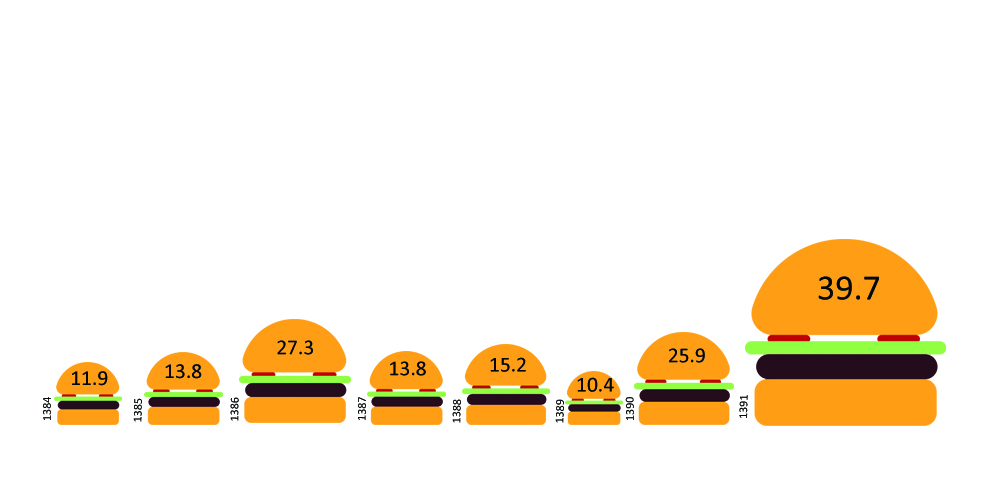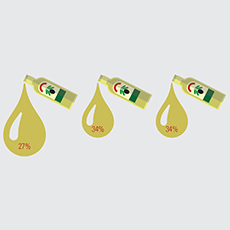Restaurants of Iran in a glance
A quick look into historical sources, shows food preparation and Bar(café’) handling has been one of the primary occupations in social history. Some historians believe that the history of restaurants and eating out goes back to the time of the city and urban developments. Today, restaurants are not only a place for eating and drinking. With the culture improvements, now a days’ restaurants are considered as a place to not only have food but also a place to have social life, Diversity and recreation in a peaceful and friendly environment.
It also should be pointed out that restaurants are one of the key factors in the industry of tourism, as being a friendly and peaceful place provide ng food for international and local tourist. Therefore, Iran as being known for its verity in food and cooking, can play a key role in Iran's tourism industry in attracting travelers and tourist whom are interested in exploring new experience.
Based on this we can consider a difference between Kebab shops and restaurants. Restaurants are in fact much more modern than Kebab shops. Restaurants have their specific features such as unique environment, equipment’s and returns. Restaurants have their standard area, for instance, restaurants much have a space more than 200 meter, such factors don’t apply for Kebab shops.
What is the restaurant cost share in Iranians life style?
In the last 12 months about 57% of population over 15 years old have dined in restaurants.

There exists a direct relationship between the society’s social classes and dinning is restaurants. The higher the social class the number of times dinning in restaurants increases. Among peoples dinning in restaurants in the last 12 months, the AB social classes had the 52% of this share to themselves comparing to middle class. Last year (1393, 2014), Iranians have spent more than 4 million USD in hotels and restaurants.
Based on the analysis done by the Iran’s central bank, it shows that urban householders spent little on hotels ad restaurants, however, these amount plays a key feature in this big financial turnover for hotels and restaurants. It is estimated, each Iranian family in 2014, have spent nearly 200 USD in hotels or restaurants. Therefore, by taking the total urban householders in to account, restaurants and hotels have earned more than 4 million USD from these people.
Last year, each Iranian family had spent around 200 USD, for food and drinks from hotels and restaurants, which is a significant amount. This means, urban householders have spent nearly 4 million USD for food. Last few years, dinning out has become kind of leisure for Iranian urban householders.
Estimates have shown that the restaurants cost share for last year in 2.1 percent. This share over the last 10 years had a swing between 2.1 – 2.4 percent.
Restaurant business has grown over the last few years. This growth has effect the market so much that most of trade units in big cities have changed into restaurants and food courts. The gathered estimations from the Central Bank of Iran, confirms such statement and the reason lays on the 4 Million turnover of this market.
Fast food:
Fast food or already prepared foods, are type of food specifically dedicated to fast food restaurants. In these restaurants, such prepared foods are served shortly after the order is placed. Most of these restaurants are not real and standard restaurants, they don’t have any serving and sitting areas, and these places more look like stores supplying food. Also most of these fast food restaurants are a branch of chain restaurants. Since opening a fast food restaurants doesn’t require great facilities or large spaces, private and dependent fast food stores, especially in developing countries such as Iran is growing day by day.
Now a days, the word fast food has become a symbol of the modern and mechanized life.

How much Iranian eat fast food:
Almost half of the population over 15 years old have gone to fast food restaurants at least once a month. What can be assumed of the analysis done by the Central Bank of Iran, 77 million Iranians have spent over 3.7 million USD annually for fast food. If we assume the price of each Barrels 100 USD (according to budget figures of the year 1393/ 2014) we can estimate that Iranian spend the cost for 37 million Barrels for fast food.
The 40% inflation of fast foods:
The analysis done on the families cost on fast food from the year 1384(2005) till 1391(2012), shows the year 2012 had the most inflation. This increase in the year 1391(2012) reached up to 39.7 present which the average inflation was 16.9 before this date. Based on this showing, the cost of fast food and prepared food were as following from the year:
1384(2005): 11.9 percent
The number of population from different social classes visited and dined in fast foods is shown in the chart below.



.jpg)

comments